Glynn Phillips said the signing of the UK Type 26 Frigate contract should provide the Australian government with confidence in the company’s bid.
As quoted in Defence Connect, he said:
“This news is very exciting for Australia as it’s a turning point for the Type 26 Global Combat Ship program. This milestone means the Royal Australian Navy should have full confidence that our offer for SEA 5000 – the Global Combat Ship-Australia – will have the largest growth margins of any ASW frigate in the world and will remain at the leading edge of naval technology throughout its service life.
The potential for concurrent production in Glasgow and Osborne also means the Commonwealth stands to receive full knowledge sharing from a live program through BAE Systems’ best-practice exchange, significantly de-risking SEA 5000.”
BAE earlier welcomed the release of the SEA 5000 Request for Tender for the Royal Australian Navy, intending to offer the Type 26 Frigate as a contender. The defence giant was one of three organisations down-selected to refine their designs for a fleet of nine Future Frigates.
According to the company:
“BAE Systems has offered the Commonwealth of Australia the Type 26 Global Combat Ship, recognised today as the world’s leading design for an anti-submarine warship.
The Company is today already working to deliver the Type 26 to the UK’s Royal Navy and is also engaged in bidding for the Canadian Government’s requirement, using the Type 26 design.”
The other contenders are Fincantieri’s FREMM and Navantia with a redesigned F-100 class vessel.
Commander UK Maritime Forces Rear Admiral Alex Burton said:
“The government has committed to eight Type 26 ships and they will be the mainstay of our anti-submarine warfare capability, both to project the continuous at-sea deterrence and to project what I’ve often described as the strategic conventional deterrence of the carrier task group.
The Type 26 will undoubtedly be the most capable ASW afloat, arriving early next decade. But it’s so much more than an ASW platform, with the ability to take Tomahawk strike missiles, a 5-inch gun and a considerable local area defence capability; and the mission bay, which can take a whole range of mission support packages.”
BAE Systems Australia Chief Executive, Glynn Phillips said:
“We are committed to supporting the development of a sustainable, national shipbuilding and sustainment industry in Australia.
We look forward to working with the Commonwealth to maximise opportunities for Australian industry, drawing on our existing supply chain and a history of more than 60 years of supporting the Australian Defence Force.”
The Defence Secretary earlier discussed defence co-operation and the Type 26 Frigate with the Australian Minister for the Defence Industry, Chris Pyne.
It is understood that talks on defence ties between the UK and Australia also discussed defence exports and equipment.
According to a press release, as part of the UK-Australia export relationship, the Type 26 Frigate has been shortlisted for Australia’s Future Frigate programme.
They also discussed joint operations carried out by both the UK and Australia and the important partnership the two nations share as members of the Five Power Defence Arrangements and the Five-Eyes Intelligence alliance.
Defence Secretary Sir Michael Fallon said:
“The UK’s Defence relationship with Australia remains close and strong. After operating together in Afghanistan and Iraq, we are now working together to tackle the threat of Daesh in the Middle East and brutal terror they spread around the world.
Britain’s defence and intelligence relationships with Australia and the close bonds we share support our mutual interests and help make both Britain and Australia safer and more secure.
This Australian Frigate programme is another opportunity to strengthen our shipbuilding ties, as well as greater cooperation between the Royal Navy and Royal Australian Navy.”
BAE Systems recently signed a contract with the Australian Government to further refine its design of the Type 26 Frigate for the Royal Australian Navy.
BAE Systems Australia Chief Executive, Glynn Phillips, said:
“We look forward to demonstrating the adaptability and maturity of the Global Combat Ship design to meet Australia’s requirements for an Anti-Submarine Warship frigate.
The Global Combat Ship design is the most modern, adaptable and flexible of all possible options available today, and I am confident that we will be able to demonstrate that it is the best able to meet the requirements of the Royal Australian Navy.
In the coming months, a team of BAE Systems’ Australian engineers will be deployed to the UK to join the Company’s established design team.
To assist this process, the Company has revealed that, a 3-dimensional visualisation suite will be delivered to Australia to help improve understanding of the unique features of the ship design”
This is part of the Australian Department of Defence’s Competitive Evaluation Process for the programme. Australia has also entered into similar agreements with Fincantieri and Navantia.
Last year, a report by think-tank RAND advised that using an existing design, most likely Britain’s Type 26 Frigate, for the warships would be the least risky option for Australia. RAND looked at three design and build options; an off-the-shelf design, a modified off-the-shelf design and an entirely new design.
“Each option would entail different risks and implications for the acquisition process and strategy. The pure military off-the-shelf solution (which most likely would be built outside Australia) probably would entail the least design and cost risk, given that there would be an experienced builder and active supplier base.”
The Type 26 represents the future backbone of the Royal Navy and a massive leap forward in terms of flexibility of surface vessels enjoyed by the service. It will replace 8 of 13 Type 23 Frigates and export orders are being sought after by BAE. The programme has been underway since 1998, initially under the name “Future Surface Combatant”.
International competition to build the Australian frigate fleet started after Australia changed plans for their new frigate ahead of the release of their defence white paper. The original plan detailed by former Defence Minister David Johnston, would have utilised the hull of the air warfare destroyer programme as the basis for the new class of frigate.
Australian Strategic Policy analyst Dr Andrew Davies said:
“It was a sensible decision given the destroyer hull was not really suited to the submarine hunting role of a purpose-built frigate, it was supposed to be a low-risk option but it was also more about preserving jobs than the Navy getting the warship it needs.”


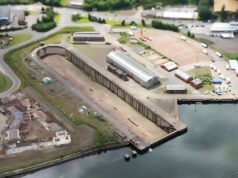
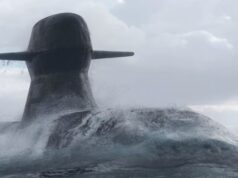
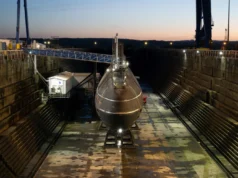

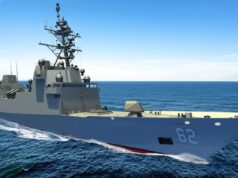
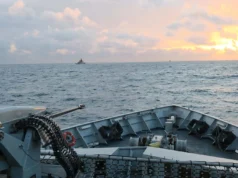

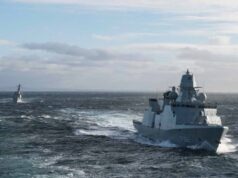
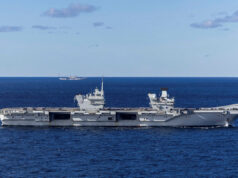
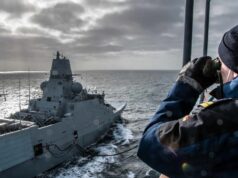

Really good news if proceeded with. Not only does Australia get a leading edge warship but the commonality would provide a fantastic opportunity for a joint carrier/amphibious task force with ships from the U.K. and the Five Powers Group.
What exactly would be ‘common’ apart from the hull and the propulsion system (and even then you would want to hope that’s not built by the same firm responsible for the T26)?
RAN weapons would be the ESSM (twice the range and faster than the Sea Ceptor) and SM2/SM6.
Radar the mandated Australian designed CEAFAR phased array radar with already proven capability (coupled with ESSM) to intercept multiple supersonic cruise missiles.
Combat system would be SAAB 9LV common across the RAN (non-Aegis) fleet.
Helo would be the Sirkosky Seahawk Romeo now in RAN service.
Finally the RN appears to be adopting a 5 inch gun (as per current Anzac frigates and Hobart AWDs).
RAN would want Harpoon fitted standard (for now and LASRM later) again as per current capability of Anzac, Adelaide and Hobart classes.
So there would be precious little commonality, the frigates would all be built in Australia not the UK, the RAN would have a bigger fleet (nine vs eight) and arguably the superior all-round ship.
Australia just needs a donor hull – and there are a few other (potentially cheaper options available). BAE is hardly the only game in town.
Brilliant BAE must be smoking something illegal. How can they announce just a couple of days ago that the cost of 3x type 26 frigates is £3.7 billion pounds. Then actually expect that they will secure a contract for these ships with Australia.
let me think
£600 million for an equal capable FREMM frigate
£700 million for an ASW version of the Australian air warfare destroyer
£1.3 billion for a type 26
£1.5 billion for a massively powerful Arleigh Burke.
based on these prices I think type 26 is in 4th place in selection process. Why would Australia even think the type 26 is a viable option
through BAE’s greed and need to give a share holders dividend they have shot themselves in the foot and destroyed all hope of export orders and probably just led to the type 26 order being reduced to just 6 ships.
what a mess! Someone needs to be sacked.
Maybe UK MOD is knowingly overpaying for our ships in order to effectively subsidize export sales. They can then, perversly, hail it as a success for both BAE and post-BREXIT UK plc.
It’s not as simple as 3.7 billion for three ships, is it. They’re the first 3 ships of class.
The total cost of the T26 programme was quoted as £11.5bn in 2015 for 13 ships, 8 ASW 5 GP.
Given that the programme has now been reduced to 8 ASW frigates, the total cost will be the region of £8bn.
£1bn a warship is to expensive. Then add in the fact that sensors and weapons will be donated from existing warships, the £1bn price is horrendous.
Correct. Some peolple will simply not accept this and are determined to adhere to the tabloid narative, no matter how many times they are corrected.
What is the per-unit cost of the ships then?
Correct. Some people just dont seem to want to accept that.
Twice you have replied without stating what you are agreeing with, the tabloid narrative I thought was stating the excessive apparent price of the ships yet you seem to be disagreeing with that and the comment you responded to which states equally they are too expensive but which you state ‘correct’ so what is it you are trying to say as there seems to be apparent contradictions here.
No chance at that price.
lol…. well, I suppose the fellow can’t say any different in public.
In private they know that when their competitors are churning out vessels at half the price, they haven’t a prayer.
Additionally it won’t add any value to the UK or if it does very little. The ship will be built in Australia meaning all the value stays there including tax on bae profit.
I don’t get why this is a positive to the UK. Unless of course it means some of the parts will be built here and transferred but no sign of that.
I consider it will be positive for the UK, Australia will have to pay a fee/contribution to R&D costs, they will need consultancy support form the UK and major sensor/weapon systems will be sourced elsewhere much of rest can be UK made if priced correctly.
We need to stop thinking about building in UK shipyards as the preferred option, we need to focus on what customers want whether it be local build or easily fitting non RN weapon systems.
Hopefully when one overseas order can be achieved others will follow.
unless the engines, sensors, some of the weapons etc are actually manufactured in the UK any order for type 26 frigates from Australia is unlikely to bring any economic benefit to UK.
The Australians know this and that is why they are keen on the type 26 design- they get a world class ship, built in Australia with no R+D costs. what is not to like about that. unless of course they get quoted a price of £1.23 billion each as well.
UK PLC needs to do this more often. Only by providing ships for export in a collaborative fashion will we get the volumes of sales needed to bring the price down, ensure continuity of R&D but also improve our designs through increased competition.
Competition forces the contractor to up their game, to listen and respond to criticisms and build products people actually want.
Nearly 4billion for 3 ships you’ve got to be shitting me their only fucking frigates ffs
Why is it everything this country does be it large engineering projects always as massive cost overuns
I just don’t think we the tax payer are getting value for money and some fucking thieving weasel or weasels are filling their bank accounts up at our expense
Case in point wembley stadium hms queen Elizabeth
[…] [7] https://ukdefencejournal.org.uk/bae-systems-australia-chief-hopeful-australia-will-opt-type-26-friga… […]